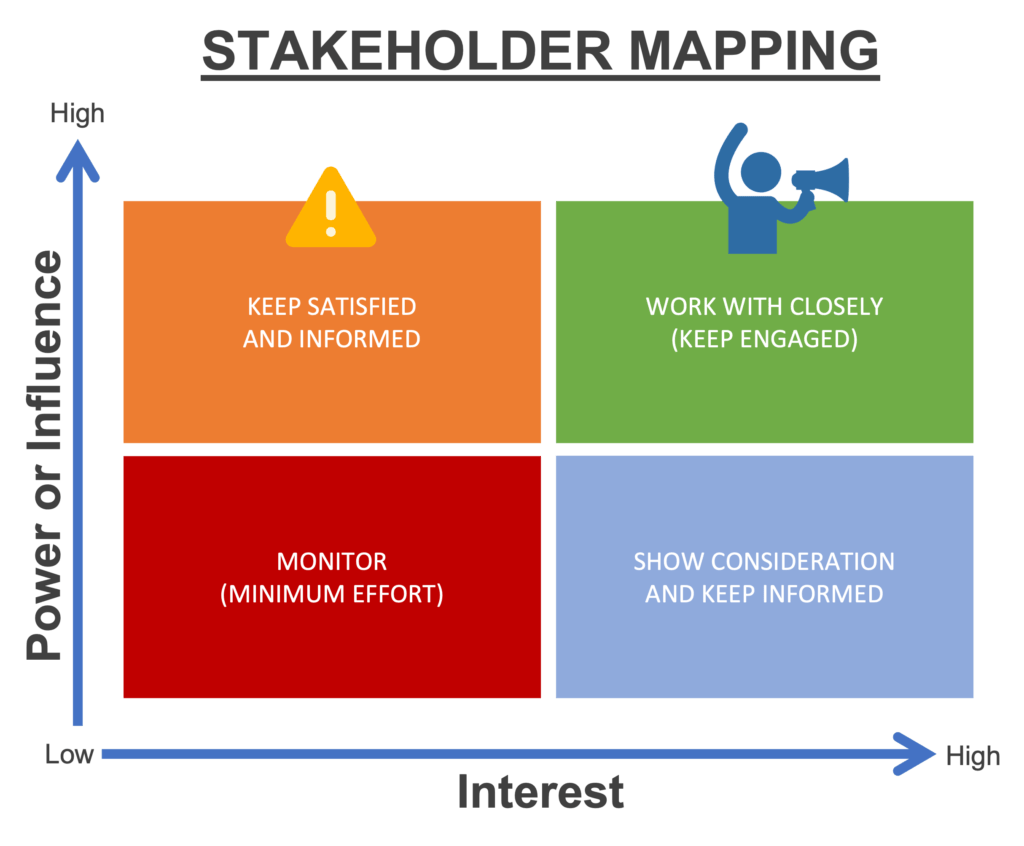Home > Blog > 3 No-Bull$%&t Tips to Help Product Managers Improve Their Persuasion Skills
3 No-Bull$%&t Tips to Help Product Managers Improve Their Persuasion Skills

One reason product management is such a difficult profession is that you are responsible for the success of your products, but you don’t have authority over most of the people whose help you need to bring about that success. So it all comes down to your persuasion skills.
To illustrate some of the challenges Product Managers face in persuading coworkers and decision-makers, try this hypothetical.
Imagine you’re preparing for a meeting with all of your key stakeholders: VPs of Development, Product, Sales, Customer Success, and Marketing, along with the CTO and CEO. Your goal is to present your plan to prioritize a new feature and persuade this group to approve it.
What approach would you take in this meeting to influence these decision-makers?
a. Present your case with data (usage stats, revenue projections, etc.).
b. Tell a compelling story (through anecdotes or the lens of your user persona).
c. Build your presentation using both of these approaches.
When you’ve made your choice, scroll down for my thoughts.
Okay, that was a trick question. I left out the correct answer:
d. None of the above.
If you’re walking into a meeting hoping to persuade a large cross-section of your company’s executive stakeholders all at once, you’ve already put yourself at a significant disadvantage. In fact, you might have already lost the game.
But that’s just one of several mistakes I’ve seen people in various departments throughout organizations make when trying to persuade colleagues to share their enthusiasm for a new initiative or idea. This isn’t a challenge for Product Managers alone. But because meetings and presentations are such an integral part of how Product Managers earn the buy-in they need to execute their strategies, the ability to persuade is particularly important for this role.
I’ll explain below why the room-full-of-stakeholders approach to persuasion is almost always a losing strategy. First, though, let me get to the good stuff. Here are three practical steps you can take to increase your chances of influencing your teams and decision-makers — and earning the green light you need to execute your strategic plans.
3 Key Steps in Your Internal Persuasion Campaign
When you want to move forward with a new product, new feature, or any other initiative, you need to be strategic about how you propose the idea and gather support across your company.
The steps below are proven best practices, and yet most Product Managers skip them entirely. So if you learn them and apply them effectively, you’ll be well on your way to becoming a more persuasive Product Manager — which will help you progress your decisions with less friction, make your job easier, and enable you to build the products you want.
1. Map your stakeholders.
Before you walk blindly into a meeting with decision-makers, you should know a few things about the attendees in that room. Who are the potential champions of your idea? Who are the potential challengers or blockers, and what are their specific objections? Who’s likely not to care either way whether you execute your plan? And who, among your potential advocates, has enough power in the company to help you get the green light?
Stakeholder mapping should be step #1 in any Product Manager’s internal influence campaign. This strategy forces you to think through how your plan could affect each stakeholder, positively or negatively, before you present it to any of them. That will inform how you approach proposing it to your stakeholders and — if you’ve done this correctly — persuading the right ones to support your plan.
Stakeholder mapping, sometimes called stakeholder analysis, is a simple exercise where you place each stakeholder on a four-quadrant graph to plot both their level of interest in the project and their influence or authority in the company to make it happen (or to stop it from happening). The diagram looks like this:

You’ll want to determine which stakeholders your project could negatively affect. For example, will it mean diverting resources away from another team’s initiative? Will they view your plan as a threat?
You’ll need to be careful in how you present the idea to these people and come prepared with data and other evidence to soothe their nerves. The best defense is a good offense, so if you actively seek to show stakeholders the upside and come ready to defuse the landmines, you can turn what might have been a detractor (if you’d been unprepared) into one of your proposal’s fiercest champions.
And who’s most likely to see the value in your plan and advocate on its behalf? Is there an executive who’s requested similar features to the one you’re proposing? Can you demonstrate to the Sales VP that building the new feature would result in a large number of upgrades from existing customers who’ve been asking for this functionality? These could be your advocates: individuals with high authority and a high degree of interest. Seek them out first, to begin gathering organizational support for your plan.
Note: This approach also works in reverse. If you’re not sure ahead of time where your blockers or advocates are, you can meet with the stakeholders you know will need to be involved in your project, learn their level of interest, and then place them in the appropriate spot on your stakeholder map.
And that brings me to my next suggested step. You need to know how best to present your case to each of these stakeholders in your one-on-one talks.
2. Learn how best to approach each stakeholder.
To succeed in product management, you’ll need to be able to read people, learn which modes of learning and understanding they prefer, and adjust your approaches accordingly to work more effectively with each person.
Your CTO might be numbers-driven. That means you’ll want to build your proposal for this conversation around statistics, market data, revenue projections, or a cost-benefit analysis.
But your Sales VP might resonate with stories and not numbers. Your best bet to persuade this person to join the upper-right corner of your stakeholder map — in other words, become a champion in the company for your idea — will be by telling a compelling story.
This could include an anecdote about a user or customer telling you how much more valuable the product would become, and how many more licenses they’d buy, if you built your proposed new feature.
3. Divide and conquer.
Once you’ve made your best guess about a stakeholder’s level of interest in your idea, and you’ve determined the best way to propose it based on what motivates that individual, you’ll want to meet with these people one at a time to make your case.
You don’t want to walk into a room of decision-makers and try to persuade them all at once to approve a plan they’re hearing for the first time. Some might perceive it as a threat. Others might just want to challenge you to see how you respond. And others might not fully grasp the upside potential you’re describing — because you’re presenting in a style that doesn’t resonate with them.
Before you ever have this large meeting, you’ll need to do the difficult legwork of meeting with each stakeholder one-on-one. Use these individual meetings to propose your plan leveraging whichever presentation style and language are best suited to that individual.
And if a stakeholder pushes back, listen to their objections and take the time to fully hear them out. In some cases, they might be worried about something you can assure them won’t happen. Or challenging a new idea might just be their method of learning more about it. Maybe they just want to hear how you defend the plan.
In some cases, the stakeholder might be missing a key piece of the puzzle, which you can easily reassure them exists and will actually make their work and life easier. A person concerned about adopting a new solution for their team, for example, might quickly change their view to positive if you can show them how much easier and more effective the new solution — which creates a single source of truth — can make their team’s daily workflows.
Still, if you get a clear no from a stakeholder, that’s okay. Keep moving forward with your one-on-ones and try to build support elsewhere.
If your plan has merit, and you can articulate its benefits using whatever format resonates with each stakeholder, you’ll likely gather the support you need.
You’re Ready to Persuade!
At this stage, you’ve completed these best-practice steps in your strategic approach to earning buy-in. You’ve mapped out your stakeholders, learned how best to present your idea to each one, and had those individual conversations. You’ve also learned which decision-makers you can count on as internal champions, which don’t have strong feelings either way, and which stakeholders could present challenges to your proposal.
Armed with all of this vital intelligence, you’re now prepared to have that cross-functional meeting with your VPs and C-level execs. And you won’t be trying to persuade them — you’ve already done that. You’ll just be nailing down the details of how to roll out your strategic plan — and how these company decision-makers can help you make it successful.


